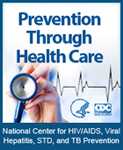STD Surveillance Report, 2013
December 16, 2014 – STD Surveillance Report, 2013
Today, CDC released its 2013 STD Surveillance Report, which presents data for three nationally reported STDs – chlamydia, gonorrhea, and syphilis. Data in this report finds STDs are continuing to pose a risk of life-long consequences for millions of Americans.
For your stories, please find below a fact sheet, downloadable graphics, and a link to the full report.
Resources
- Fact Sheet: STD Trends in the United States: National Data for Gonorrhea, Chlamydia, and Syphilis
- Full Report: Sexually Transmitted Disease Surveillance, 2013
Graphics: STD Trends in the United States, 2013
The following images and graphics highlight major findings from CDC’s analysis. These high-resolution, public domain images are ready to download and print in your publication. Click on a graphic to see it in high-resolution.
These images are in the public domain and are thus free of any copyright restrictions. As a matter of courtesy, we ask that the content provider be credited and notified of any public or private usage of an image.

Gay and Bisexual Men Face Highest – and Rising – Number of Syphilis Infections
View High Resolution Version
Trend data show that men who have sex with men account for three quarters (75 percent) of all primary and secondary syphilis cases. Primary and secondary syphilis are the most infectious stages of the disease, and if not adequately treated, can lead to visual impairment and stroke.
 Most Reported Chlamydia and Gonorrhea Infections Occur among 15-24-Year-Olds
Most Reported Chlamydia and Gonorrhea Infections Occur among 15-24-Year-Olds
View High Resolution Version
While sexually transmitted diseases affect individuals of all ages, STDs take a particularly heavy toll on young people. Surveillance data continues to show that numbers and rates of reported chlamydia and gonorrhea cases are highest in Americans between the ages of 15 and 24.
###
- Page last reviewed: December 16, 2014
- Page last updated: December 16, 2014
- Content source:


 ShareCompartir
ShareCompartir

